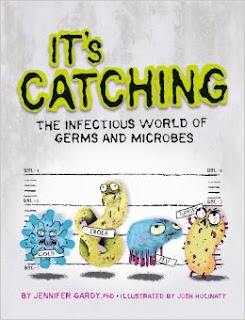As the author of a book called Hawk, I was naturally interested when the Canadian Raptor Conservancy came to Regina earlier this month. This group has a focus on conservation and education, bringing live bird shows across Canada.
 Many of the species are endangered, so the shows offer a unique opportunity for the public to see these birds up close. In Regina, we saw a great horned owl, several species of falcons and hawks, and even a bald eagle.
Many of the species are endangered, so the shows offer a unique opportunity for the public to see these birds up close. In Regina, we saw a great horned owl, several species of falcons and hawks, and even a bald eagle.During the shows, the handlers use posts for the birds set in strategic areas around the room. They carry the birds to the posts, then walk away. At a signal, the birds swoop through the crowd -- often right overhead -- to fly back to the handlers for their reward. The show set up in Evraz Place in Regina to get enough room for these dramatic flights that quickly won over the crowds on a cold January weekend.
That also let them set up displays of falconry equipment, wall-sized photos, and display cabinets of bird feather, bones, anatomy, and a full-sized mural of bird wingspans for children to compare against their own outstretched arms.

The combination of macabre and informative displays made for exciting set-ups to catch the attention of the crowd between shows.
Between the shows and the displays, people who attended had many opportunities to learn a few facts about the birds and their handlers. For example, the peregrine is the fastest bird in the animal kingdom. In a dive (or stoop), peregrines tuck in their wings in a teardrop shape to reach speeds of over 300 k/h (200 mph). With breeding programs for more than 15 species, the Ontario facility houses some 200 birds bred in captivity, and releases some of these birds back into the wild.
In Regina, the group teamed up with Little Ray's Reptile Zoo and the Backyard Conservation Fund of Canada, alternating the raptor shows with live snakes and reptile demonstrations. Reptiles of all kinds were also housed in display cases throughout the show area.
Large poster boards and displays also gave the conversation message, and the handlers were ready to talk about their message during and between shows. Many raptor species face habitat loss from such human activities as urban sprawl and pesticides, so these shows offer a unique opportunity for the public to interact and learn a little about ecology and conservation at the same time.
Here are some more websites to check for information about raptors:
Canadian Raptor Conservancy
http://www.canadianraptorconservancy.com
Audubon: Identify Raptors in Flight:
https://www.audubon.org/news/identify-raptors-flight
Watch a video of a peregrine falcon in flight:
https://www.youtube.com/watch?v=Me3Y64VUqqQ
Amazing Planet: Five fastest birds
https://www.youtube.com/watch?v=MMsLVxcKh24
Watch for the Canadian Raptor Conservancy shows as they move across Canada. Have you seen a show yet? Leave a comment and let's discuss it.
Marie Powell is the author of the young adult fantasy Hawk (Five Rivers), as well as 30 other books for children and youth on a variety of topics. More information about her and her books can be found on her website at www.mepowell.com.






